
|
Astronomy Picture Of the Day (APOD)
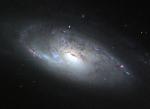 M106: A Spiral Galaxy with a Strange Core
M106: A Spiral Galaxy with a Strange Core
15.02.2000
What's happening at the center of spiral galaxy M106? A swirling disk of stars and gas, M106's appearance is dominated by two bright spiral arms and dark dust lanes near the nucleus. Bright newly formed stars near their outer tips distinguish the spiral arms in the above photograph.
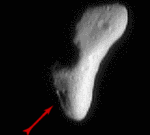 An Unexpected Asteroid Valentine
An Unexpected Asteroid Valentine
14.02.2000
Maybe the Moon owns our hearts, but this won't stop the occasional asteroid from sending us a valentine. Friday, to the surprise of many, the NEAR mission on approach to asteroid 433 EROS photographed what appears to be a heart-shaped depression.
 Southwest Mercury
Southwest Mercury
13.02.2000
The planet Mercury resembles a moon. Mercury's old surface is heavily cratered like many moons. Mercury is larger than most moons but smaller than Jupiter's moon Ganymede and Saturn's moon Titan. Mercury is much denser and more massive than any moon, though, because it is made mostly of iron.
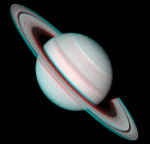 Stereo Saturn
Stereo Saturn
12.02.2000
Get out your red/blue glasses and launch yourself into this stereo picture of Saturn! The picture is actually composed from two images recorded weeks apart by the Voyager 2 spacecraft during its visit to the Saturnian System in August of 1981.
 XMM-Newton First Light: X-Rays From The LMC
XMM-Newton First Light: X-Rays From The LMC
11.02.2000
Recently the European Space Agency released this and other spectacular "first light" pictures from its new orbiting x-ray observatory, christened XMM-Newton. A churning region of star birth and death in our small neighboring galaxy, the Large Magellanic Cloud (LMC), this field was one of several chosen to test out XMM-Newton's x-ray imaging capabilities.
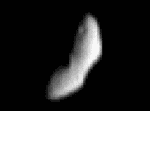 Eros Encounter Nears
Eros Encounter Nears
10.02.2000
After an unanticipated extra trip around the Sun, the NEAR spacecraft is now politely approaching asteroid 433, Eros, at a respectful relative speed of about 20 miles per hour. Still nearly 2,000 miles distant, NEAR will close to within approximately 200 miles by February 14th - Valentine's Day.
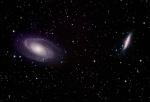 Galaxy Wars: M81 Versus M82
Galaxy Wars: M81 Versus M82
9.02.2000
In the left corner, wearing a red nucleus surrounded by blue spiral arms, is M81. In the right corner, sporting light stars and dark dust lanes, is M82. These two mammoth galaxies have been locked in gravitational combat for the past billion years.
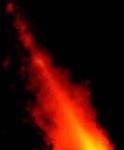 Rings Around Beta Pictoris
Rings Around Beta Pictoris
8.02.2000
An unusual dust disk surrounds nearby star Beta Pictoris. Discovered in 1983, astronomers are still learning just how unusual this disk is. Recent images and computer simulations indicate that the disk contains several elliptical dust rings larger than our own Solar System.
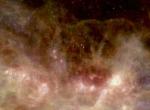 The W4 Chimney
The W4 Chimney
7.02.2000
A huge chimney venting hot clouds of gas out from the plane of our Milky Way Galaxy has recently been imaged in radio waves. The Canadian Galactic Plane Survey team used an array of radio telescopes to survey an ionized gas region known as W4.
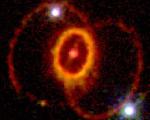 The Mysterious Rings of Supernova 1987A
The Mysterious Rings of Supernova 1987A
6.02.2000
What's causing those odd rings in supernova 1987A? In 1987, the brightest supernova in recent history occurred in the Large Magellanic Clouds. At the center of the picture is an object central to the remains of the violent stellar explosion.
|
January February March April May June July August September October November December |
|||||||||||||||||||||||||||||||||||||||||||||||||